In the realm of nail services, the significance of hygiene and safety cannot be overstated. Nail salons transcend mere aesthetic enhancement; they function as environments where the risk of cross-contamination and infection looms large. Consequently, the imperative of sterilization emerges as a cornerstone of practice. This blog delves into the nuanced facets of sterilization within the nail service industry, clarifies the distinctions between disinfection and sterilization, outlines key considerations for clients during their salon visits, and underscores the perils of cross-infection.
Demystifying Sterilization and Disinfection
Before we plunge into the intricacies of sterilization protocols in nail services, it’s crucial to grasp the distinction between sterilization and disinfection.
Sterilization is a rigorous process aimed at annihilating all forms of microbial existence, encompassing bacteria, viruses, fungi, and spores. This is typically accomplished through techniques such as autoclaving (steam sterilization), dry heat, or chemical agents. Within the nail service context, sterilization is non-negotiable for any instruments that make direct contact with skin or nails.
Conversely, disinfection pertains to the elimination of the majority of pathogenic microorganisms, though not all. Disinfectants are generally employed on surfaces and non-invasive tools, effectively reducing the microbial load to a safer level, yet they do not assure complete sterilization. For example, while disinfecting a nail station or a non-metal instrument may maintain cleanliness, it does not guarantee the eradication of all pathogens from tools that penetrate the skin.
Grasping these definitions is essential for both nail technicians and clients, providing a foundational understanding of safe nail care practices.
The Perils of Cross-Contamination
A paramount concern in nail salons is the threat of cross-contamination. When instruments like clippers, files, and buffers are inadequately sterilized, they can serve as conduits for bacteria and viruses, transferring harmful pathogens from one client to another. Common infections stemming from unsanitary conditions include:
– Fungal Infections: These arise when spores are transmitted via contaminated tools.
– Bacterial Infections: Bacteria may infiltrate through tiny cuts or abrasions, potentially leading to conditions such as cellulitis.
– Viral Infections: Viruses, including HPV (Human Papillomavirus), can be disseminated through unsterilized equipment.
To mitigate these risks, vigilance from both clients and technicians regarding hygiene practices is imperative.
What to Look for When Visiting a Nail Salon
As a discerning client, it’s vital to take an active role in ensuring that the nail salon you select adheres to rigorous sanitation standards. Here are some critical points to check:
1. Observe the Salon’s Cleanliness: A pristine salon environment often signifies commitment to hygiene. Look for spotless floors, well-kept equipment, and organized work areas.
2. Inquire About Sterilization Methods: Ask how the salon sterilizes its tools. They should employ an autoclave or another effective method for metal instruments.
3. Check for Disposable Items: Ensure that disposable products, such as files, buffers, and gloves, are fresh and unused. Utilizing disposables minimizes cross-contamination risks.
4. Examine Staff Hygiene: Nail technicians should display commendable personal hygiene. Look for well-groomed uniforms, neat nails, and the consistent use of gloves during services.
5. Visibility of Sterilization Equipment: If feasible, observe the sterilization machinery. Reputable salons often showcase their sterilization processes to reassure clients.
6. Training and Education: Inquire whether technicians have undergone training in sanitation and infection control. Continuous education in hygiene practices is vital for nail professionals.
Ensuring Proper Equipment Sterilization
Nail salons must implement stringent sterilization protocols to safeguard client health. Here’s a breakdown of effective sterilization practices:
1. Cleaning: Prior to sterilization, all tools must be meticulously cleaned to eliminate visible debris or contaminants. This can be achieved through soap and water or an ultrasonic cleaner.
2. Sterilization Method: Employ an autoclave for metal instruments, utilizing steam under pressure for optimal sterilization. Alternatively, dry heat or chemical agents may be used, but autoclaving remains the gold standard.
3. Proper Storage: After sterilization, tools should be stored in a clean, dry environment. Utilize sealed pouches or containers to avert recontamination.
4. Monitoring Sterilization: Regular checks on sterilization equipment are essential. Utilizing biological indicators can verify the effectiveness of the sterilization process.
5. Documenting Procedures: Keeping records of sterilization practices can enhance accountability and client confidence, illustrating a commitment to hygiene.
Upholding a Clean Image for Clients
Nail technicians bear a critical responsibility in fostering a hygienic atmosphere. Here are several strategies technicians can employ to convey cleanliness to clients:
1. Professional Appearance: Donning clean uniforms and practicing personal hygiene sets a positive precedent for clients.
2. Transparent Communication: Openly discussing sterilization practices with clients cultivates trust and transparency. Clients appreciate being informed about the measures taken to ensure their safety.
3. Visible Cleanliness: Maintaining organized and sanitized workstations signals to clients that hygiene is prioritized. Regularly disinfecting surfaces during services can further enhance client confidence.
4. Empowering Client Education: Informing clients about the significance of sterilization and hygiene empowers them to make informed decisions regarding their nail care.
Introducing My Nail Service Protocol
As a dedicated nail technician, my commitment extends beyond enhancing the beauty of your nails; it encompasses your safety and well-being. My nail service protocol incorporates rigorous sterilization practices to ensure an enjoyable and secure experience.
– Sterilized Tools: All metal instruments employed during your service are meticulously cleaned, disinfected, and sterilized for a minimum of 120 minutes at 200 degrees under dry heat. You can easily verify this by inspecting the sterilization bag: a brown dot signifies that the tools are unsterilized, while a green dot indicates they are safe for use. This transparency fosters trust in the equipment utilized on your nails.

– Single-Use Equipment: I utilize disposable files and cleaning brushes for every client. These items are single-use and will remain with you post-service, ensuring no tools are shared among customers. For regular clients, I offer the option of a personal kit containing your own files, brushes, and buffers, enhancing safety and hygiene.
– *Safety Commitment: Your safety is my top priority. In the nail industry, adherence to health and safety standards is imperative, and I am devoted to upholding the highest levels of cleanliness and hygiene. Quality is essential, but safety takes precedence, and I take every precaution to protect my clients.
Conclusion
In the nail service industry, sterilization transcends being merely a procedure; it embodies a commitment to client safety and well-being. Distinguishing between sterilization and disinfection, being cognizant of hygiene practices, and ensuring proper equipment sterilization are all vital components of a secure nail care experience. By prioritizing sterilization and maintaining high standards of hygiene, nail salons can effectively prevent cross-contamination and safeguard their clients from infections and health risks.




